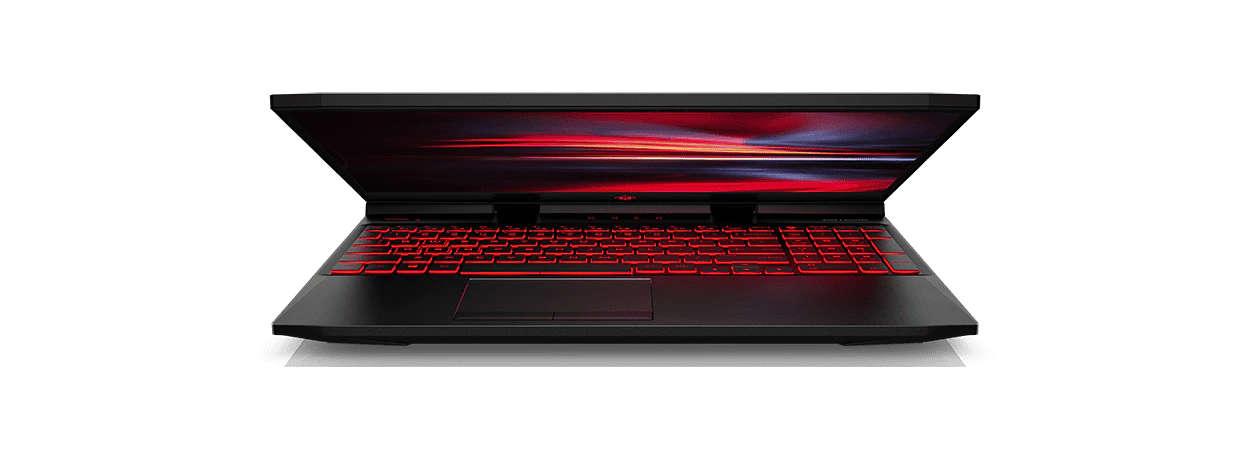Thank you for visiting the HONG KONG HP Store
-
Contact Us
CONTACT USChat with us
- Our specialist are here to help
- Live chat
- Sales
- 85264507529(WhatsApp)
-

- Post Sales
- 85230016720(WhatsApp)
Mon-Fri 8.30am - 5.30pm
(exc. Public Holidays)
Live product demo
Store finder Locate our storesSubmit feedback We value your opinion! - Location
- My Account
HP Collaboration Tools for Remote and On-Site Employees


By leveraging collaboration tools, organizations can bridge the gap between remote and on-site employees, creating a cohesive and productive work environment.
Choosing the right tools for remote work can set teams up for success by communicating effectively, cooperating seamlessly, and tapping into shared resources, regardless of physical location, ultimately leading to positive business outcomes.
89% of Hong Kongers prefer remote work, and HP offers a suite of collaboration tools for businesses that make it possible to efficiently and securely work from anywhere. Let us help you prepare for prosperity with strategies and equipment that can make flexible working policies fruitful for all.
HP's remote work collaboration hardware
A hybrid work setup, which combines remote and on-site work, typically requires a combination of hardware to support both flexibility and productivity.
Here are some key hardware components to consider for a hybrid work setup.
A reliable computer or laptop is essential for remote work. Ensure that it meets the requirements for your job tasks and has sufficient processing power, memory, and storage capacity. Consider the software applications you'll be using, such as resource-intensive programs like video editing or 3D modeling software. Hybrid work often involves accessing your work computer remotely. Consider a desktop computer that supports remote access solutions such as virtual private network (VPN) connectivity or remote desktop software.
HP Elite SFF 800 G9 Desktop PC


What makes the HP Elite SFF 800 G9 Desktop PC ideal for remote work collaboration?
• 13th Generation Intel® Core™ i5 processor
• 16GB DDR5-4800 MHz RAM (1 x 16GB)
• 1TB PCIe® NVMe™ solid-state drive (SSD) storage
Intel processors are known for their strong performance capabilities, allowing them to handle demanding tasks efficiently. They are designed to deliver high clock speeds, multiple cores, and advanced architectures, resulting in smooth multitasking, faster data processing, and enhanced overall system performance.
If you require a larger screen or multitasking capabilities, consider using an external monitor or multiple monitors. An external monitor can be hooked up to your laptop, or used alone with a desktop machine. This can enhance your productivity and provide a more comfortable working environment, especially for tasks that require extensive screen real estate or simultaneous use of multiple applications.
HP E23 G4 FHD Monitor


What makes the HP E23 G4 FHD Monitor ideal for remote work collaboration?
• 23" FHD (1920 x 1080)
• On-screen controls, low blue light mode, anti-glare screen
• 1 VGA, 1 USB Type-B, 1 HDMI 1.4, 1 DisplayPort™ 1.2, 4 USB-A 3.2 Gen 1
A Full HD (FHD) monitor can be a good choice for hybrid workstations for several reasons. The display quality of FHD monitors allows for comfortable viewing of text, images, and videos. FHD resolution is well-suited for video conferencing applications. It allows participants to see clear and detailed video feeds of remote colleagues, enhancing the communication experience and facilitating more engaging virtual meetings.
A quality headset or earphones with a built-in microphone can help improve audio quality during calls and video conferences. They also provide privacy and reduce background noise, allowing you to focus on discussions without distractions.
HyperX Cloud II Gaming Headset


What makes the HyperX Cloud II Gaming Headset ideal for remote work collaboration?
• HyperX Signature Comfort
• Virtual 7.1 Surround Sound
• 53 mm Drivers
Using a gaming headset in work scenarios can offer several benefits. HP gaming headsets feature active noise cancellation isolation techniques. Noise isolation can be particularly beneficial for remote workers in noisy or busy environments, allowing you to concentrate on your tasks without being disturbed by external sounds.
Whether you’re a business making sure your employees have optimal home office setups that let them connect with the rest of the team or a team member with a hybrid working contract, HP has your needs in mind.
Our equipment provides dedicated functionality for tasks such as video calls, screen sharing, and document collaboration. These specialized tools for remote work offer scalability, enabling organizations to adapt to changing needs and accommodate various team sizes.
These devices can be deployed across multiple locations or scaled up as the organization grows. Additionally, dedicated hardware can provide flexibility in terms of supporting different workspaces, including huddle rooms, conference rooms, or home offices, ensuring consistent collaboration experiences regardless of the environment.
Prioritizing security for remote work collaboration
Hardware you can trust and configure is one component of securing the flow of information being transferred between internal and external offices and employees. In addition, the policies, standards, and verification processes a business requires should be part of your considerations when executing hybrid work setups.
Remote workers should receive regular security awareness training to understand best practices for maintaining safe data usage while working remotely. Training should cover topics such as identifying phishing emails, recognizing social engineering attacks, safe browsing habits, and general cybersecurity hygiene.
Tools for remote work should also be subject to appropriate measures that secure the physical work environment. This includes locking devices when not in use, securing paper documents, and implementing privacy screens to prevent unauthorized viewing of sensitive information.
To prevent loss of critical information, work-from-anywhere scenarios should consider how to regularly back up important data to avoid data loss in the event of device theft, damage, or other unforeseen circumstances. Cloud-based backup solutions or network-attached storage (NAS) devices can be used to securely store and retrieve backed-up data.
Seamless communication tools for remote work
Synchronous work between teams, from your skyscraper headquarters in Central to your seaside weekend home in Sai Kung, relies on dependable hardware features that can facilitate effective collaboration.
High-quality video conferencing systems enable face-to-face communication between team members in different locations. Look for systems that offer HD video, clear audio, and support for multiple participants. Features like screen sharing, virtual whiteboarding, and chat functionalities further enhance collaboration during meetings.
It’s also important to set some ground rules for virtual meeting etiquette. Encourage participants to mute their microphones when they are not speaking. Suggest that employees position themselves facing a well-lit area, preferably with natural light, so that their face is clearly visible. Remind employees to connect to a stable internet connection before joining a video conference. A wired connection is generally more reliable than WiFi, but if WiFi is the only option, they should be in close proximity to the router for a stronger signal.
While not strictly hardware, collaboration software and cloud services are essential for synchronous work between teams. These tools for remote work allow for real-time document editing, file sharing, task management, and communication. Look for software that provides version control, and integrates with other productivity tools.
HP's collaboration software and network solutions allow remote workers to manage projects effectively by assigning tasks, setting deadlines, and tracking progress, all in one centralized platform. This improves organization and accountability among team members.
Optimized collaboration tools for business
The suitability of remote work setups for different types of businesses ranges, but almost all sectors and sizes of organizations can implement successful hybrid work arrangements to varying degrees.
Remote work can be well-suited for many startups due to lower overhead costs compared to traditional office space. It allows startups to recruit talent from a wider geographic area. A hybrid model cultivates a results-oriented, self-managed culture through responsibility and ownership over work. As the startup grows, hybrid work helps scale headcount without extensive overhead while maintaining culture.
Jobs that are primarily computer-based like software development, design, support, etc. translate very well to remote setups. Tech companies have generally found remote work to increase productivity while saving on real estate costs.
Larger enterprises have found success with both dedicated remote and hybrid work setups depending on roles and functions. Communication tools help dispersed teams stay connected while retaining talent and improving efficiencies. However collaboration for some mission-critical functions still relies on occasional in-person interactions.
Support and training
Remote work collaboration can be made even easier with HP Services. Let us help your organization with enhanced IT capabilities through a collection of offerings where our team lends a hand with the setup and configuration of new HP hardware, HP Wolf endpoint security solutions, and options for our experts to deploy rapid repair or replacement at home, in the office, or in the field.
Without any extra costs, your HP collaboration tools for business come with built-in resources by accessing HP Computer Support online, anytime. Download drivers, check your warranty status, or speak with virtual assistants.
Of course, any organization thinking about rolling out hybrid working programs should consider building a library of policies and resources to protect their hardware and software assets, along with intellectual property, data, and employees.
• Create online tutorial videos or guides demonstrating how to set up and use new hardware like laptops or phones. Show device features step-by-step.
• Develop self-paced online modules or live online classes for common productivity/communication tools. Cover programs, features, and tips through presentations, demos, and exercises.
• Set up one-on-one video calls for new joiners to assist with setup questions during their first weeks.
• Create simulated environments for hands-on practice with equipment and tools.
• Implement media-rich microlearning modules covering single tasks via emails, calendar invites, etc.
• Gather feedback through post-training surveys to enhance modules over time.
Summary
HP prides itself on technology that works for your workforce, and the rules of work have changed. Your work setup should be flexible enough to be productive from anywhere, without sacrificing an ounce of security, functionality, or efficiency.
Remote work offers numerous benefits, including increased flexibility, reduced commuting time, and improved work-life balance. A hybrid model appeals to many companies, balancing productivity with employee well-being.
Most young, skilled talent today expect flexible arrangements. If you haven’t considered how to equip your business with a work-from-anywhere mentality and the hardware necessary to make it a reality, now is the time to attract your future workforce.
About the Author: Elle Rex is a contributing writer for HP Tech Takes. Elle is a research-obsessed entrepreneur currently based in Hong Kong. She enjoys exploring topics that involve innovation, startups, psychology, and travel.
- Our specialist are here to help
- Live chat
- Sales
- 85264507529(WhatsApp)
-

- Post Sales
- 85230016720(WhatsApp)
Mon-Fri 8.30am - 5.30pm
(exc. Public Holidays)
Live product demo








